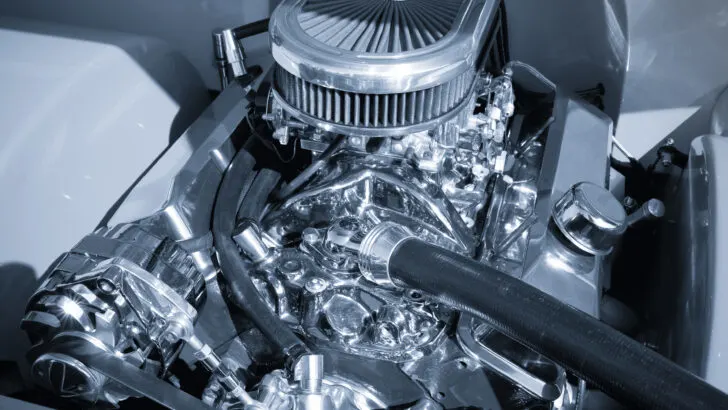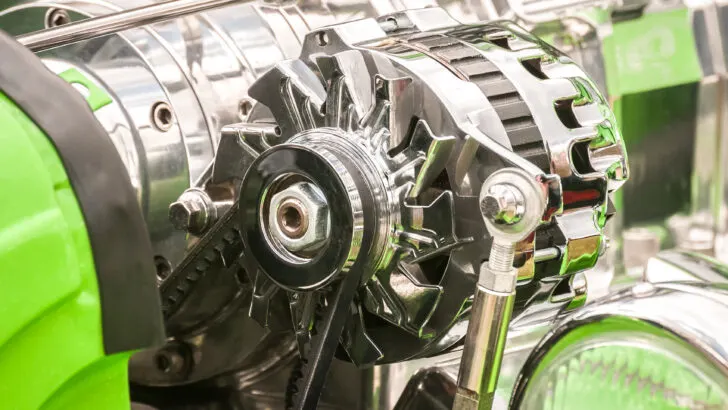Turbochargers are a simpler and economical way to increase an engine’s horsepower without increasing size or capacity.
And, as you might have seen in the movies, a turbo significantly increases an engine’s horsepower. But exactly how much horsepower are we talking about here?
Adding a turbocharger to an engine involves upgrading other devices for the system to perform well. But generally, a well-installed turbo system will add 70 to 150 horsepower, or a 10 to 50% power increase.
Read on to learn more about horsepower and what turbochargers can add to it.
How Much Horsepower Does a Turbo Add to Certain Engines?
How much horsepower a turbo adds to some engines depends on the type of engine. These can include:
Inline-4 Engines
Due to its design, a turbo is usually added to an inline-4 engine for better fuel economy rather than improved performance.
With these engines, you expect a horsepower boost of less than 10% of the rated capacity.
V-6 Engines
Similar to the inline-4, other factors determine the horsepower you’ll add to a V-6 with a turbo. But generally, expect a 15 to 25% horsepower boost.
V-8 Engines
With a V-8 engine, you can get a higher horsepower boost of 20 to 50% by adding a turbo.

What’s a Turbocharger?
In an internal combustion engine, a turbocharger is a forced induction component powered by exhaust gases.
It uses energy from the flow of exhaust gases to compress the intake gas and force more air into the engine cylinders to produce greater horsepower for a given displacement.
Traditionally, most drivers installed turbochargers in the race or high-performance cars to boost horsepower when needed.
Today, they’re more advanced, improve fuel economies, and reduce carbon emissions, as you can use them in smaller engines.
Furthermore, car engines rely on the combustion of a mixture of compressed air and fuel in cylinders to generate power.
It’s this power that’s then transferred through a rotating shaft to the gears and finally to the wheels.
The faster a car engine burns fuel, the faster it should be. Also, the more cylinders you have in an engine, the more fuel it can burn, producing greater power and improved performance.
However, that isn’t always the case, as having more cylinders lowers your vehicle’s fuel economy. Vehicle manufacturers opted for greater efficiency by using a turbocharger to overcome this.
How Do Turbochargers Work?
A turbo has three main components, namely the turbine, compressor, and center housing hub rotating assembly (CHRA).
Turbine
The turbine is a mechanical device, similar to the one on a jet engine, that converts air kinetic energy to rotational energy to power the compressor.
It has a housing that directs high-velocity exhaust air over the turbine blades, causing them to rotate at speeds of up to 25,000 rpm.
And what’s so brilliant about turbo technology is that some designs create the best conditions to suit an engine’s demands, performance, and characteristics.
Compressor
As implied from the name, a compressor takes air from the atmosphere, compresses it, and directs it via the inlet manifold to the engine’s combustion chambers.
Center Hub Rotating Assembly (CHRA)
A CHRA houses a shaft connecting the turbine to the compressor. It also has a bearing that lets the shaft rotate at high speeds with little friction and minimal energy loss.
Now that we know the main components, let’s look at how they work together to boost your car’s horsepower.
As we’ve seen, the turbine rotates to power the compressor through a shaft. The turbocharger is usually attached to an engine’s exhaust manifold to force the exhaust gases through the turbine blades.
As the cylinders push the exhaust gas out, it causes the blades to rotate, and hence the compressor. The compressor is mounted inside a car’s intake to enable it to compress the air before forcing it to the engine cylinders.
However, a challenge arises at this point. Compressing a gas makes it hotter, less dense, and ineffective for engine combustion. Therefore, the hot compressed gas passes over a heat exchanger (intercooler) for cooling before being directed to the engine for combustion.
After each combustion cycle, the exhaust gases exit through the exhaust outlet, blowing the turbine blades on their way out through the exhaust pipe. And the cycle repeats.
Where Does a Turbo Get the Extra Power From?
A common misconception is that the turbo gets the horsepower boost from recycled exhaust gases. However, the truth is that recycling exhaust gas is one way of making the system more efficient.
If there were a better way to do it, we would have used it.
The power boost in an engine when using a turbo results from burning more fuel. And remember that combustion is a chemical process resulting when a substance reacts rapidly with oxygen to give out heat.
Keeping the amount of oxygen constant while increasing fuel in a cylinder will only increase power up to a specific limit, which is inefficient and leads to poor fuel economy.
Therefore, we need more oxygen in the cylinder if we increase the fuel amount for each combustion cycle.
And, since the turbo isn’t connected to a vehicle’s drivetrain, it doesn’t directly affect its performance. All it’s doing is enabling the engine to burn more fuel per cycle, making it more powerful.

What Is a Turbo Boost?
A turbo boost is a positive difference between the intake manifold and atmospheric pressures. The higher the values, the greater the turbo power.
A turbo system has an intercooler to lower the temperature of the compressed gas and a wastegate valve to reduce the boost pressure level.
Additionally, it has a blow-off valve that removes any excess pressure from the system.
How High Can You Boost?
Theoretically, if a turbocharger increases an engine’s power, a bigger one will result in greater power. But, with every system, there are limits beyond which the system will cease to work well.
It can either be due to excessive losses or the system being overwhelmed. In reality, you cannot fit a jet engine in a road-legal vehicle and still have good fuel economy and safety.
Additionally, the sizes of your vehicle’s engine cylinders, intake manifolds, exhaust channels, and even the intercooler will limit the boost you’ll get from a particular engine.
What Is a Turbo Lag?
A turbo lag is a slow throttle response you’ll notice when driving a turbocharged vehicle when the RPMs are insufficient for the turbo to provide extra engine power.
As we’ve seen, the amount of compressed air in the cylinders is proportional to the compression rate. And the compression rate is proportional to the speed of exhaust gases over the turbine blades.
You’ll need your engine to achieve certain high RPMs and expel exhaust gases at a higher velocity for better turbine speeds.
Therefore, a turbocharged vehicle will feel like a naturally aspirated engine at lower RPMs.
Final Remarks on How Much Horsepower Is Added From a Turbo
A turbocharged engine improves your vehicle’s performance and is excellent if you’re more into sports cars.
Your vehicle will have power comparable to larger naturally aspirated vehicles while having relatively better fuel economy.
However, some significant drawbacks of these systems are their complexity, unreliability, and high repair costs.
If you’re planning on installing one in your car, remember to start with a large engine so that you don’t over boost.
Also, you’ll have to remap the ECU and modify the rest of your car to improve its handling, performance, and safety.
It’s not an easy task, and be ready to dig deeper into your pockets for professional installation.
Sources
https://www.hotcars.com/aspiration-battle-turbo-inline-4-vs-na-inline-4/
https://www.ipdusa.com/Articles/586/Understanding-Turbo-Boost
https://www.autocar.co.uk/car-news/technology/under-skin-how-turbochargers-have-evolved
